#Urban farming
Text


Little Free Greenhouse in Portland
45 notes
·
View notes
Text
As urban populations boom, urban agriculture is increasingly looked to as a local food source and a way to help combat inequitable food access. But little is known about how productive urban agriculture is compared to conventional, rural farming. A new study digs in, finding urban gardeners and hydroponics can meet and sometimes exceed the yields of rural farms.
“Despite its growing popularity, there’s still quite a lot we don’t know about urban agriculture, like whether the yields are similar to conventional agriculture, or even what crops are commonly grown,” says Florian Payen, an environmental scientist at Lancaster University and lead author of the study, published today in AGU’s journal Earth’s Future.
The new study compiles studies on urban agriculture from 53 countries to find out which crops grow well in cities, what growing methods are most effective, and what spaces can be utilized for growing. The researchers find that urban yields for some crops, like cucumbers, tubers and lettuces, are two to four times higher than conventional farming. Many other urban crops studied are produced at similar or higher rates than in rural settings. Cost efficiency remains an open but important question.
Most studies on urban agriculture have focused on green spaces, such as private and community gardens, parks and field growing operations. Payen’s work includes “gray” spaces — places in cities that are already built but could be used for growing, such as rooftops and building facades. In both green and gray spaces, the study examines a suite of crops grown in soils versus hydroponics, horizontal versus vertical farming, and natural versus controlled conditions.
“Surprisingly, there were few differences between overall yields in indoor spaces and outdoor green spaces, but there were clear differences in the suitability of crop types to different gray spaces,” Payen says. Certain crops like lettuces, kale and broccoli are more naturally suited to be grown vertically in indoor spaces than others. “You can’t exactly stack up apple trees in a five- or ten-layer high growth chamber,” he says, “though we did find one study that managed to grow wheat stacked up like that.”
Other crops, like watery vegetables (e.g., tomatoes) and leafy greens, performed well in hydroponic environments. And crops grown in fully controlled environments can be grown throughout the year, allowing harvests to happen more times per year than in open-air environments, which leads to higher annual yields. But scientists will need to keep studying these systems to plan cost-effective agriculture solutions.
The finding that urban agriculture can have similar or greater yields to conventional agriculture “is exactly what we have been waiting for in the urban agriculture research community,” says Erica Dorr, an environmental scientist at AgroParisTech who was not involved in the study.
845 notes
·
View notes
Text








Detroit Become Human (2018)
#detroit become human#cyberpunk#video games#cyberpunk aesthetic#gaming#scifi games#artificial intelligence#androids#interactive story#scifi aesthetic#gifs#gifset#dbh#dbh connor#blade runner#rooftop#farming#urban landscape#urban farming#urban agriculture
81 notes
·
View notes
Text
Actually, I love that cottagecore has given Gen Z a word for "I want to have a big garden and cook my own food and keep chickens" that isn't casually invoking colonialism and manifest destiny. I get so goddamned uncomfortable every time someone refers to their urban hobby farm as a "homestead" and I'm glad to finally see it being replaced with other terms. I will buy a million books about how to live a cottagecore lifestyle if it will convince publishers to stop marketing the "homesteader" lifestyle and will get white city dwellers to stop unironically self-identifying as colonizers.
#like??? words mean things#anyway#kill the cringe#cottagecore#cottage vibes#cottage life#slow living#slow life#simple living#homesteading#urban farming#hobby farm#solarpunk#gardening#self sufficiency#farmcore#mine
875 notes
·
View notes
Photo
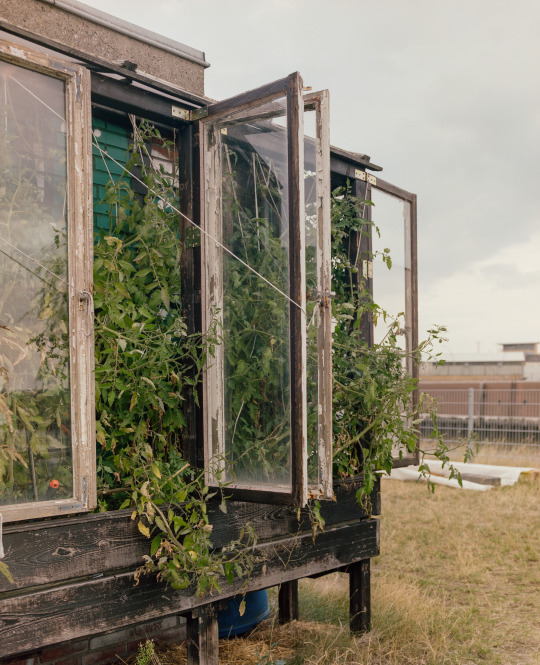
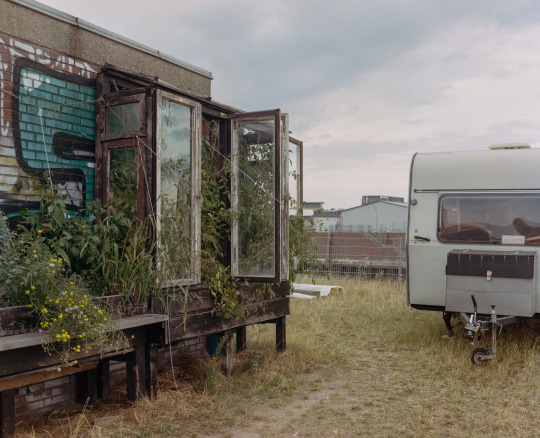

urban gardening project, Hamburg
Mamiya RZ67 / Kodak Portra 160
#film camera#film photography#color film#kodak portra 160#kodakfilm#hamburg#urbanjungle#urban gardening#gardening#medium format#lensblr#documentary photography#analog photography#film#healthy#urban farming#vintage
2K notes
·
View notes
Text
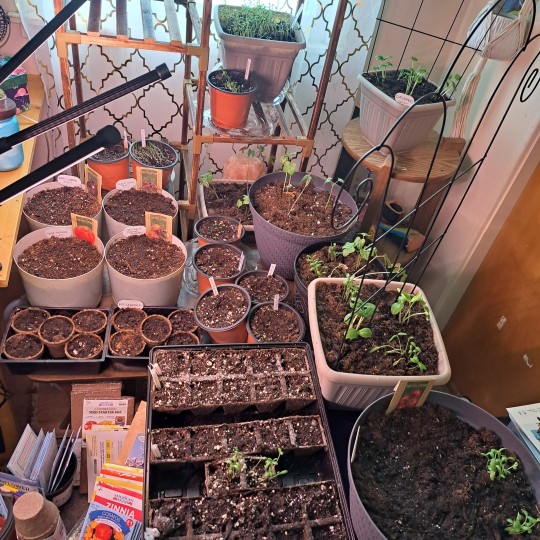

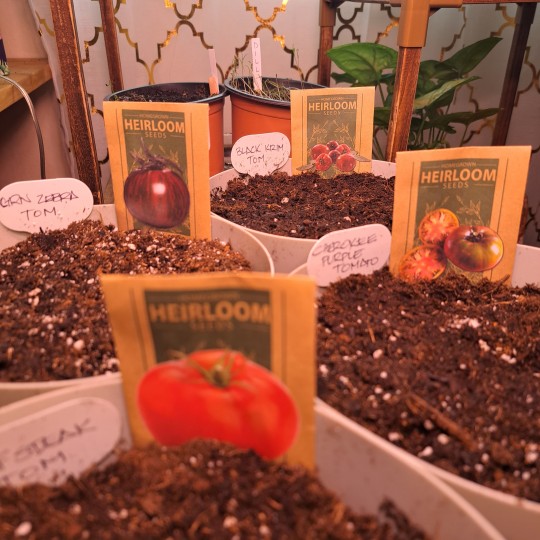


Ooooookaaaay Round 2! Transplanted all.of those morning glories that shot up into bigger pots.
Distributed Marigolds into Basil and tomato pots.
Got 8 cucumber shoots transplanted into their own pots.
Planted Hollyhock seeds and a varying variety of different tomato plants.
My craft room is over flowing!! I can't wait to get the greenhouse back up. Hopefully it will be done by April 15th!
#urban gardening#gardeners on tumblr#container gardening#urban farming#green thumb#gardenblr#cottagecore#greenblr#cottageblr#self sustainability#hollyhock#tomato plant#basil#dill#cilantro#marigolds#native wildflowers
56 notes
·
View notes
Note
There are illegal chickens??
It is illegal to keep a vegetable garden and chickens in a lot of places in America
279 notes
·
View notes
Text
Good afternoon everyone~
It's cold, windy and it's been raining on and off all day but I finally got out to harvesting the sweet potatoes.
I started with the 'L' bed.

This is the bowl I'll be using to collect the spuds for this deep raised bed.
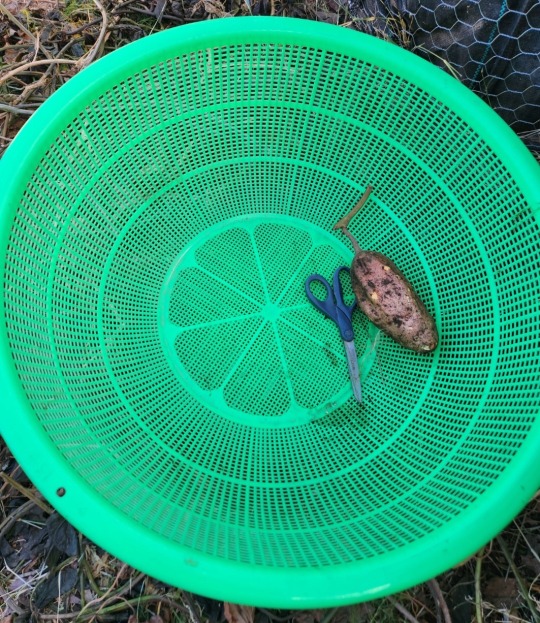
Those are full size scissors btw. This is the absolute biggest strainer I own and when I do harvesting I'm always glad to have it! Helps with carrying and washing off dirt outside so much easier!

It was pretty fun digging round for the spuds and to be honest the size and shape of some of them really suprised me!

For some size comparison, my hand is right on top of them.
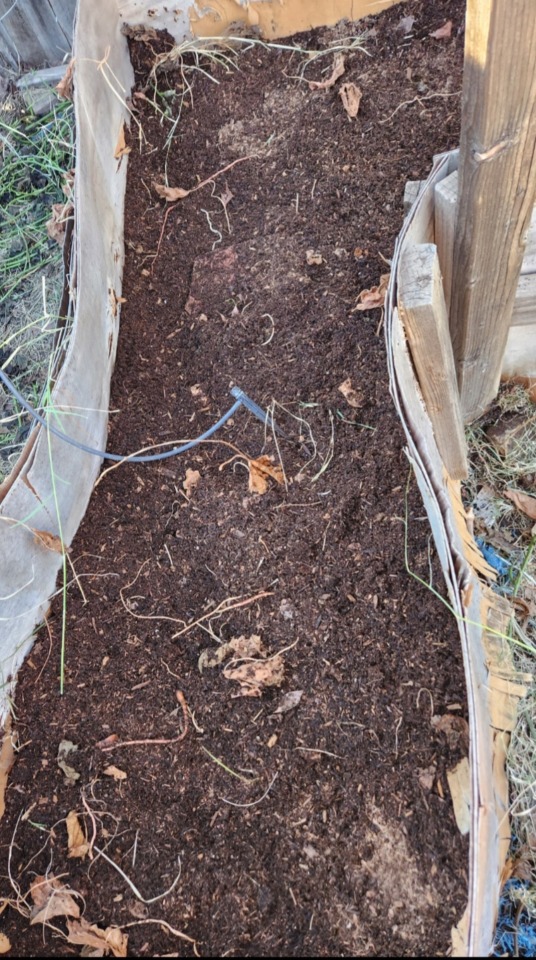
All cleaned out!
Next was the little round bed in the corner. I wasn't really expecting much, but it filled the bin pretty good.

I've washed the spuds off and am letting them dry off but I'll be finding a spot inside soemwhere to let them sit and cure for a bit of time. (I probably will let them cure until end of febuary.)
Curing your sweet potatoes is what makes them sweet, you can eat them right away but their said to be bitter. (I will be trying 1 potato to see if this is true!) Curing them should be done for at least 2 week in a cool dry space (around 80*f). If you under 80*f space add 7 more days.
I thought this was neat and wanted to share it. since I've not seen a sweet potato grown or dug up before

I wasn't expecting so much differance in spud size from one single root.
And one last pic,
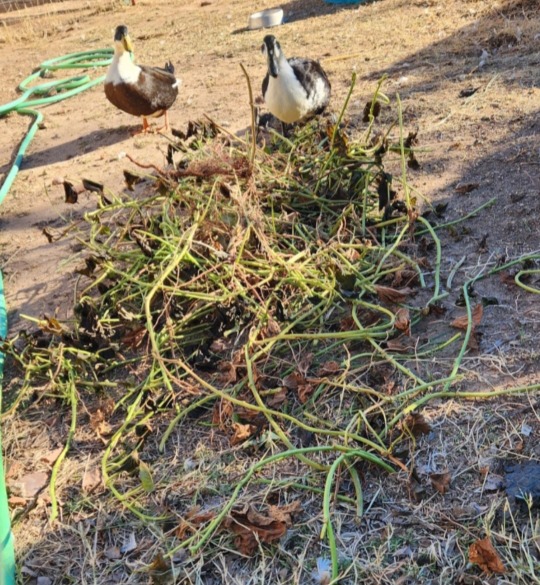
The ducks quite like the greens, while there's not much left of it I'm going to leave the vines a couple days so they can use it as enrichment/snack opportunity.
Weigh in on the spuds later!
🍠🌱Happy Homesteading and Harvesting!!
🌱🍠
1.11.2024
#self sufficient living#homesteading#thestudentfarmer#studentfarmer#self sufficiency#food#garden#gardening#low waste#duck#sustainability#smalls scale differences#urban animal keeping#urban biodiversity#urban homesteading#urban gardening#urban farming#grow what you can#simple plants to grow#multipurpose crops#right to grow#human right to clean food#right to grow food#raised garden beds#start to finish#will it grow?#food sovereignty#whole foods#first time growing#going green as can be
62 notes
·
View notes
Text


I
“Today we are still preoccupied with creating gardens.Why? To not suffer from hunger. Because having rice, beans, fava beans, maize, peanut — then one can survive.” — Renato, of the Canela community[1]
“The development of what we know as agriculture was not an overnight phenomenon, but rather a several thousand year-long project. In some places in the world, the earliest stages of cultivation were never surpassed, and remain sustainable today. In many more places, the pressures of the global economy have corrupted these practices just in this last century. But in most of the world today, we are witnessing the full-blown colonization of native foodways, and a nearly complete dependence on western industrial practices. To trace this “biodevestation” directly back to cultivation itself, is to ignore the history of conquest and land displacement that pushed the food systems of subsistence cultures to the brink, where they now teeter on the edge of extinction.” — Witch Hazel, Against agriculture & in defense of cultivation
Situated in dense forests and savanna of the Brazilian state of Maranhão lives the indigenous Canela people. In the past they lived from hunting, gathering and gardening but starting from 200 years ago as they were pushed from their traditional territory as settler farmers occupied the land bit by bit. The lush forests are being replaced by industrial eucalyptus and soy plantations, and cattle ranches. They now inhabit an area 5 to 10 percent of their original territory. Traditionally the Canela travelled from place to place as the seasons changed but now adopt a more sedentary lifestyle living in bigger permanent villages. Although the Canela still depend on hunting and foraging they don’t have access to a big enough land base to cover all their needs so they increasingly depend on gardening to meet their needs.
For the Canela gardening is not just to meet their subsistence needs but also a means of resistance against being assimilated into the structures, networks, dependency and the institutional inequality of the Brazilian state, religious institutions, and multinational corporations who are constantly trying to infringe and occupy the Canela’s home.
Other threats to the Canelas way of life are from the environmental effects from the industrialized agriculture of soy and eucalyptus production that causes water depletion which exacerbates drought and soil erosion. The overuse of fertilizers and agrochemicals annihilates plant biodiversity and pollutes the local rivers and waterways with high levels of nitrogen and phosphorus which in turn causes algal blooms which can produce toxins that are harmful to animals and cause dead zones from the reduction of oxygen in the water starving fish and plants. So any flora or fauna living near a eucalyptus or soy plantation is at risk.
The Canela’s subsistence gardening approach is totally different from monocrop agriculture. They work with nature using a conscious ecological and more biodiverse method.Typically in agriculture only a small variety of cash crops are grown in large fields covering acres upon acres of land where in the Amazon large sections of jungle are destroyed. For the Canela gardners instead of being dependent on a small variety of cash crops they cultivate over 300 varieties of plants to meet their subsistence needs. Instead of using destructive hellish machines like bulldozers, ploughs, and combine harvesters they use a slash and burn method to clear small patches just enough for them to use and their tools consist of a digging stick and woven baskets. They only use the same garden for two years and then not use the same area for at least eight years to allow the forest to regrow and return fertility to the soil.
The Canela’s vast knowledge of plants helps them determine which ones make good companions that will help each other grow, which ones are natural repellents to predatory insects that will attack the plants, and which plants to grow which will attract beneficial insects such as pollinizers. And likewise their vast knowledge of soil helps them to consciously plant to suit the 10 different soil groups in their area which will help prevent soil erosion, nutrients depletion, and combat against other harmful effects that are typical of agriculture. Their focus is for caring for the well-being of local biodiversity and the nonhuman inhabitants.
The Canel don’t see themselves as farmers but parents looking after their plant kin viewing their saved seeds and cuttings as their babies and their growing crops as their infants, genuinely loving them in the same way as if they were their human children caring for the plants as the plants care for them. They view the environment as consisting of human and nonhuman “selves”, and gardening as caretaking for themselves and their plant and human families.
#gardening#subsistence gardening#resistance#solarpunk#small farms#urban farming#small farm movement#community building#practical anarchy#practical anarchism#anarchist society#practical#revolution#anarchism#daily posts#communism#anti capitalist#anti capitalism#late stage capitalism#organization#grassroots#grass roots#anarchists#libraries#leftism#social issues#economy#economics#climate change#climate crisis
29 notes
·
View notes
Text
youtube
Permaculture Instructor Andrew Millison visits the biggest rooftop farm on the West Coast of the US located in Oakland, California. Designed and built by Benjamin Fahrer of Top Leaf Farms and operated by Deep Medicine Circle, this is an impressive project bringing food production, food security, and food justice to the heart of the city.
Top Leaf Farms:
https://topleaffarms.c...
Deep Medicine Circle:
https://www.deepmedici...
#Andrew Millison#solarpunk#rooftop farm#rooftop garden#urban garden#urban farming#urban farm#farm#farming#Oakland#California#USA#Top Leaf Farms#Deep Medicine Circle#food desert#Benjamin Fahrer#Youtube
16 notes
·
View notes
Text
In a conversation with Civil Eats, lead author Jason Hawes, a Ph.D. student at the University of Michigan, said this his team compiled “the largest data set that we know of” on urban farming. It included 73 urban farms, community gardens, and individual garden sites in Europe and the United States. At each of those sites, the research team worked with farmers and gardeners to collect data on the infrastructure, daily supplies used, irrigation, harvest amounts, and social goods.
That data was then used to calculate the carbon emissions embodied in the production of food at each site and those emissions were compared to carbon emissions of the same foods produced at “conventional” farms. Overall, they found greenhouse gas emissions were six times higher at the urban sites—and that’s the conclusion the study led with.
But not only is 73 a tiny number compared to the data that exists on conventional production agriculture, said Omanjana Goswami, an interdisciplinary scientist at the Union of Concerned Scientists (UCS), but lumping community gardens in with urban farms set up for commercial production and then comparing that to a rural system that has been highly tuned and financed for commercial production for centuries doesn’t make sense.
“It’s almost like comparing apples to oranges,” she said. “The community garden is not set up to maximize production.”
In fact, the sample set was heavily tilted toward community and individual gardens and away from urban farms. In New York City, for example, the only U.S. city represented, seven community gardens run by AmeriCorps were included. Brooklyn Grange’s massive rooftop farms—which on a few acres produce more than 100,000 pounds of produce for markets, wholesale buyers, CSAs, and the city’s largest convention center each year—were not.
And what the study found was that when the small group of urban farms were disaggregated from the gardens, those farms were “statistically indistinguishable from conventional farms” on emissions. Aside from one high-emission outlier, the urban farms were carbon-competitive.
183 notes
·
View notes
Text
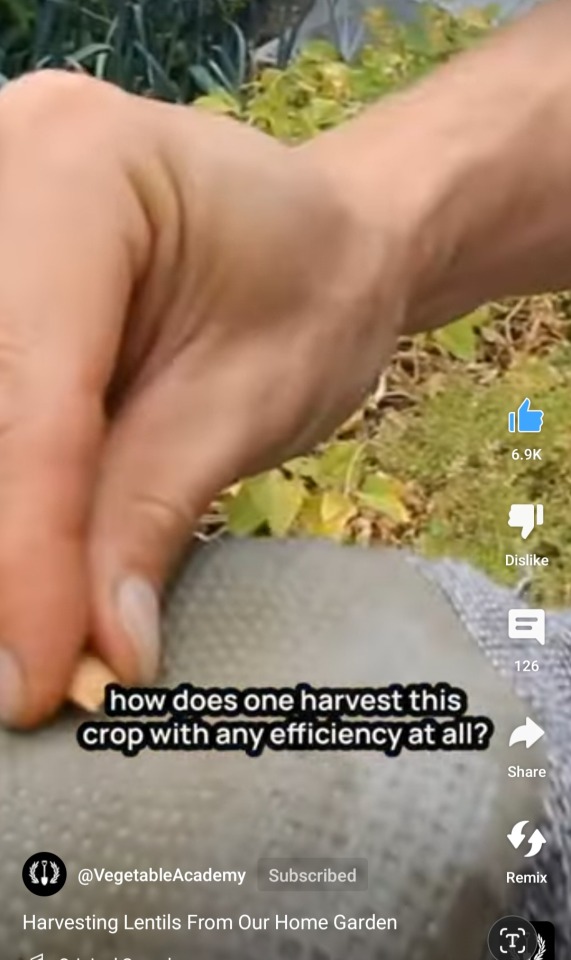
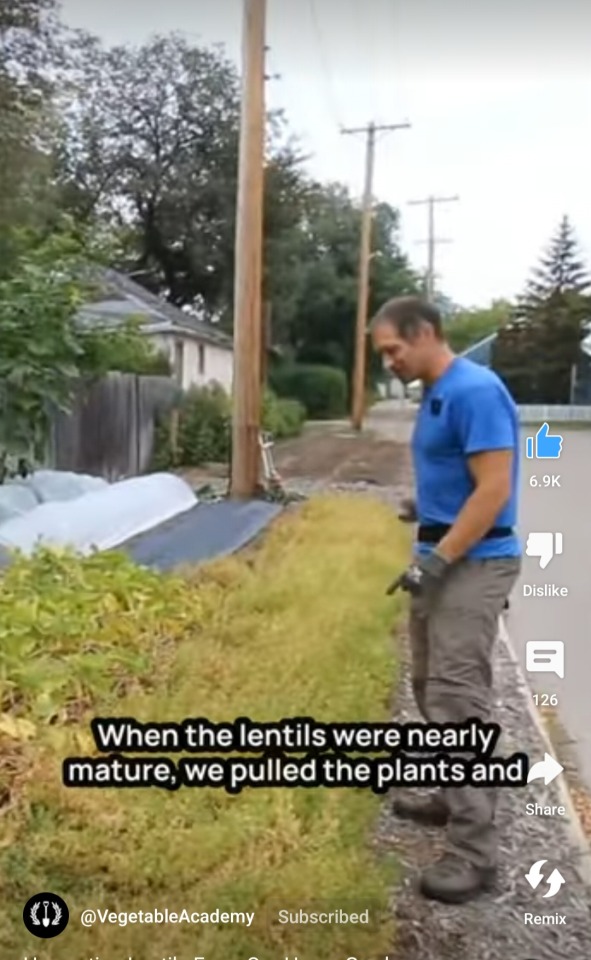



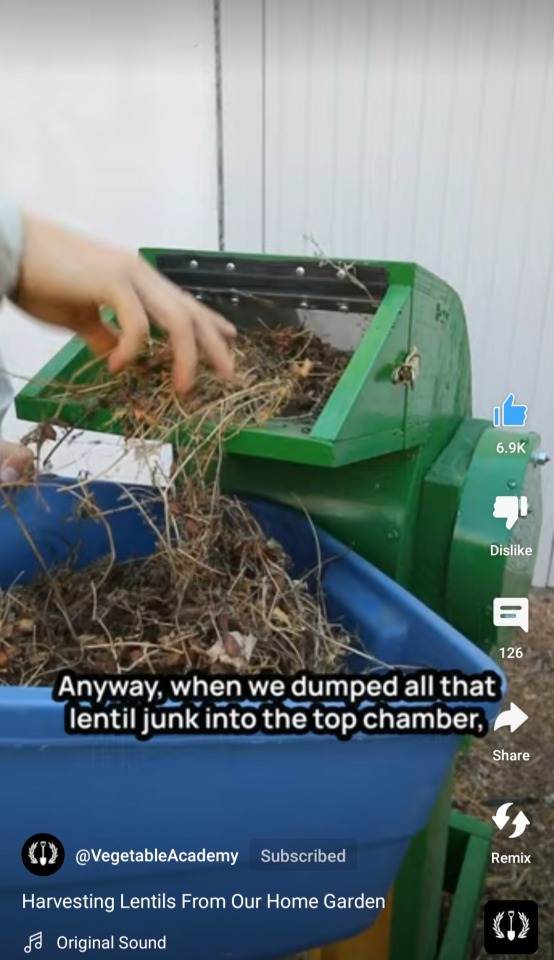
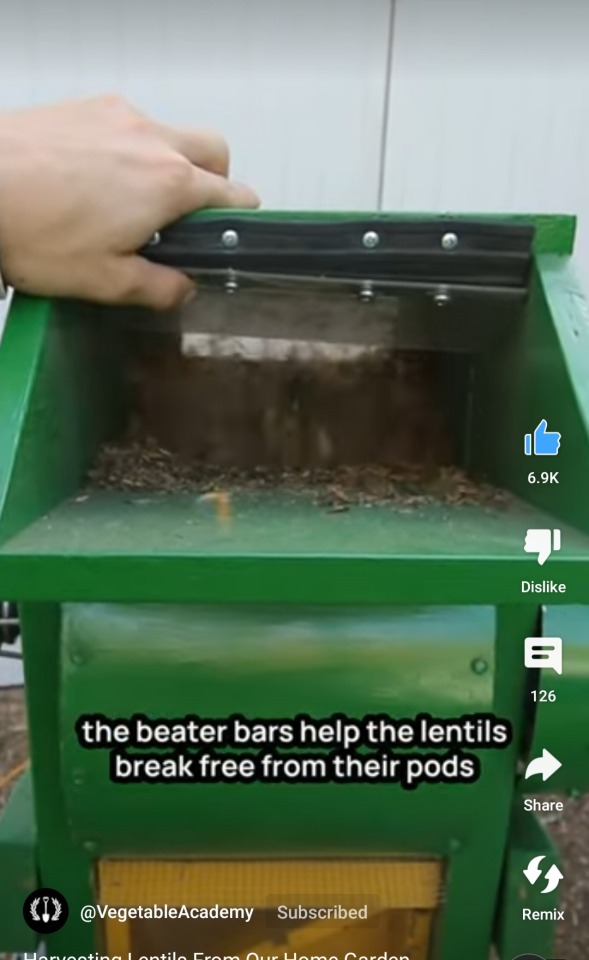
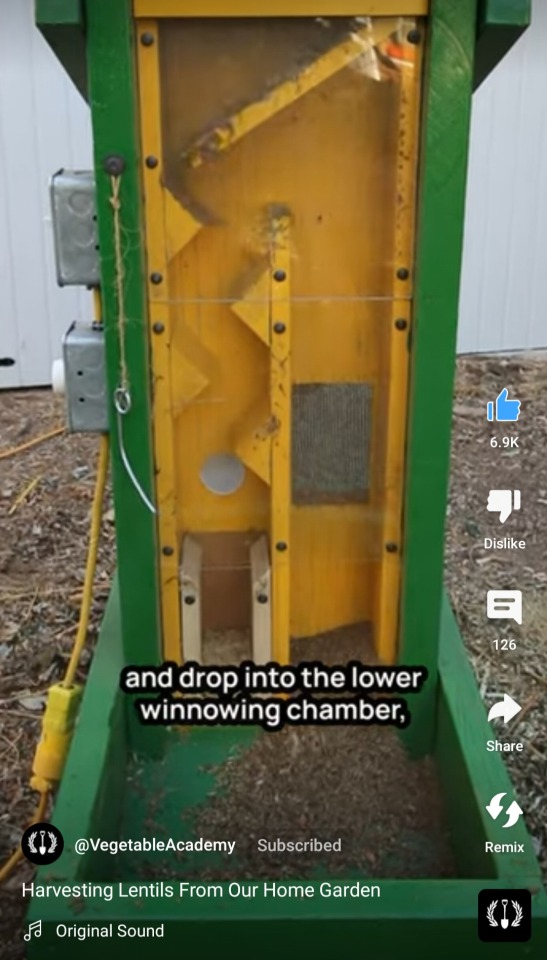
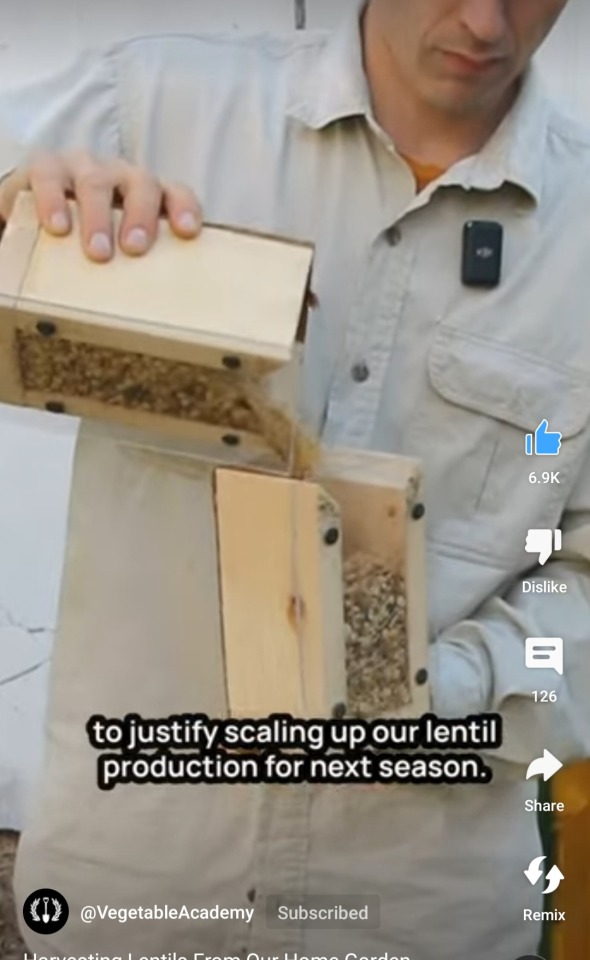
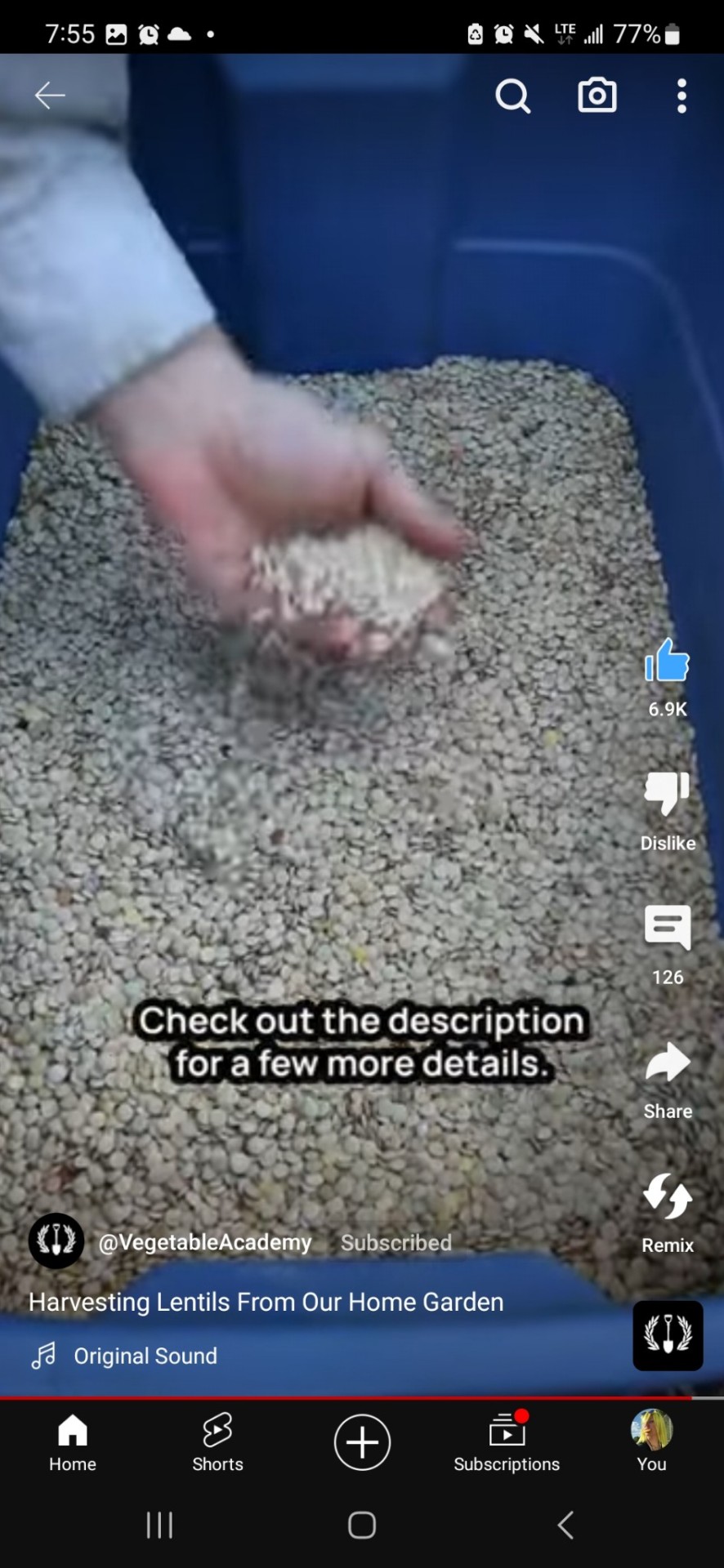
#permaculture#solarpunk#functional supply chains#garden hacks#protein farming#urban farming#green technology
84 notes
·
View notes
Text

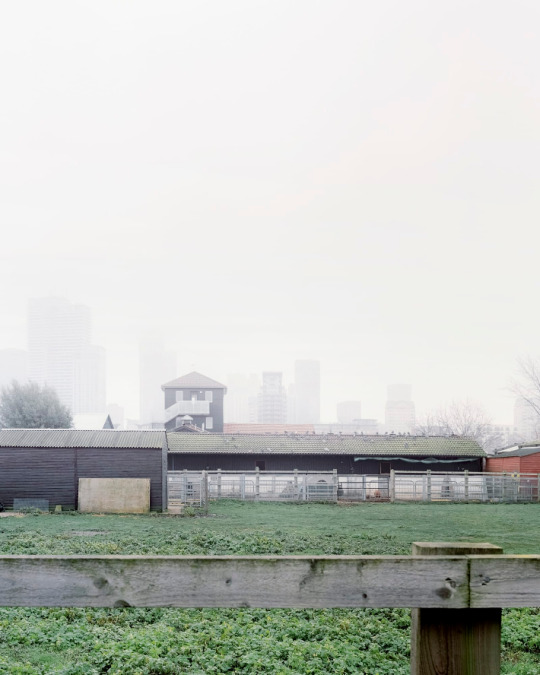
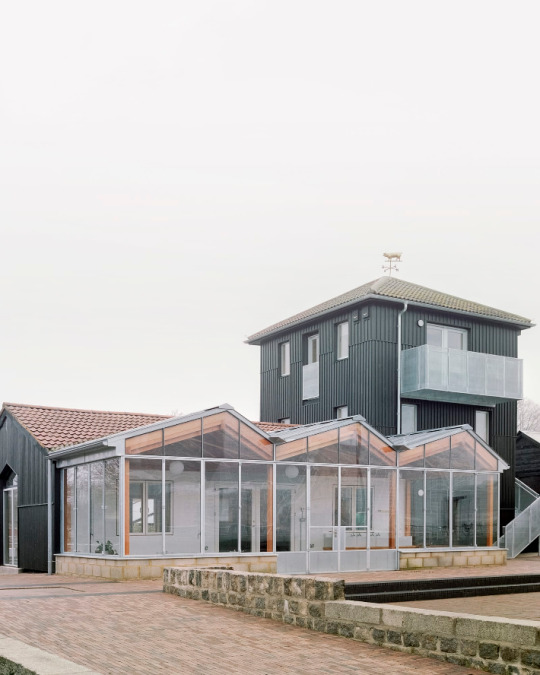
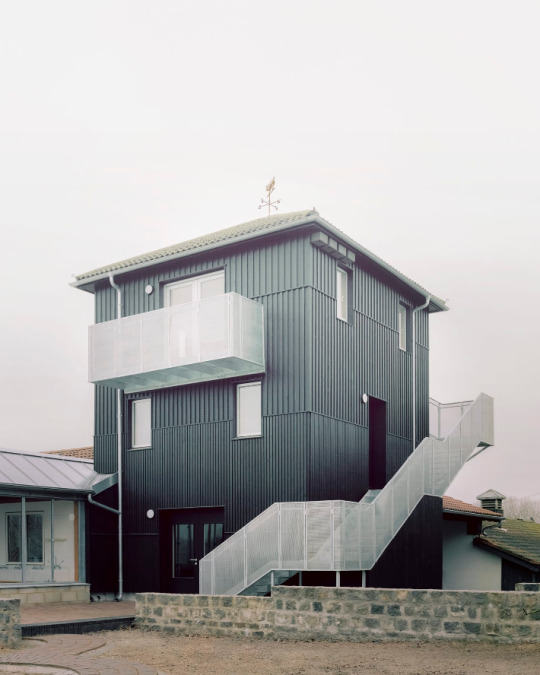
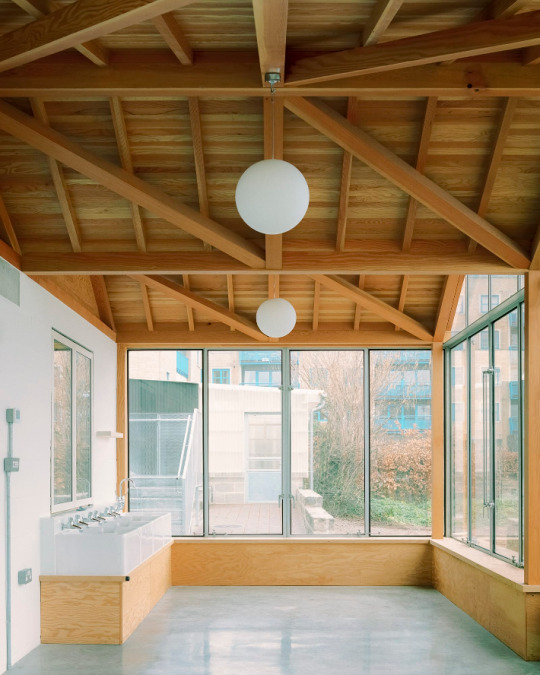


Surrey Docks Farm, London - Pup Architects
#Pup Architects#architecture#design#building#modern architecture#interiors#minimal#interior design#farm#urban farming#south london#london#river thames#fog#quayside#metal cladding#timber#beautiful design#industrial#british architecture
66 notes
·
View notes
Text



me in my element (I'm covered in soil)
#I'm dirty and I'm in the SUN :)#my typical Wednesday#me#maya#gardening#gardener#farming#urban farming#urban farmer
29 notes
·
View notes
Text
How urban farming improves our cities
(some links, curated by yours truly)
#solarpunk#solar punk#solarpunk aesthetic#urban farming#cities#renewal#healing#plants#medicine#pollution#environment#nature
29 notes
·
View notes
Text


My blueberry bush is looking good. I sprinkled Epsom salt and coffee grounds into the soil as well as bi-weekly organic fertilizer (banana peels and egg shells soaked over night in water, then said water is used for my plants).
She managed to live through a Wyoming Springtime Hailstorm. It was her first, and she made it through with almost all of her leaves.
I can't wait to taste my first berries!
#blueberry#container gardening#urban gardening#gardeners on tumblr#urban farming#green thumb#self sustainability#gardenblr#gardencore#cottagecore#urban cottagecore#future harvest
25 notes
·
View notes